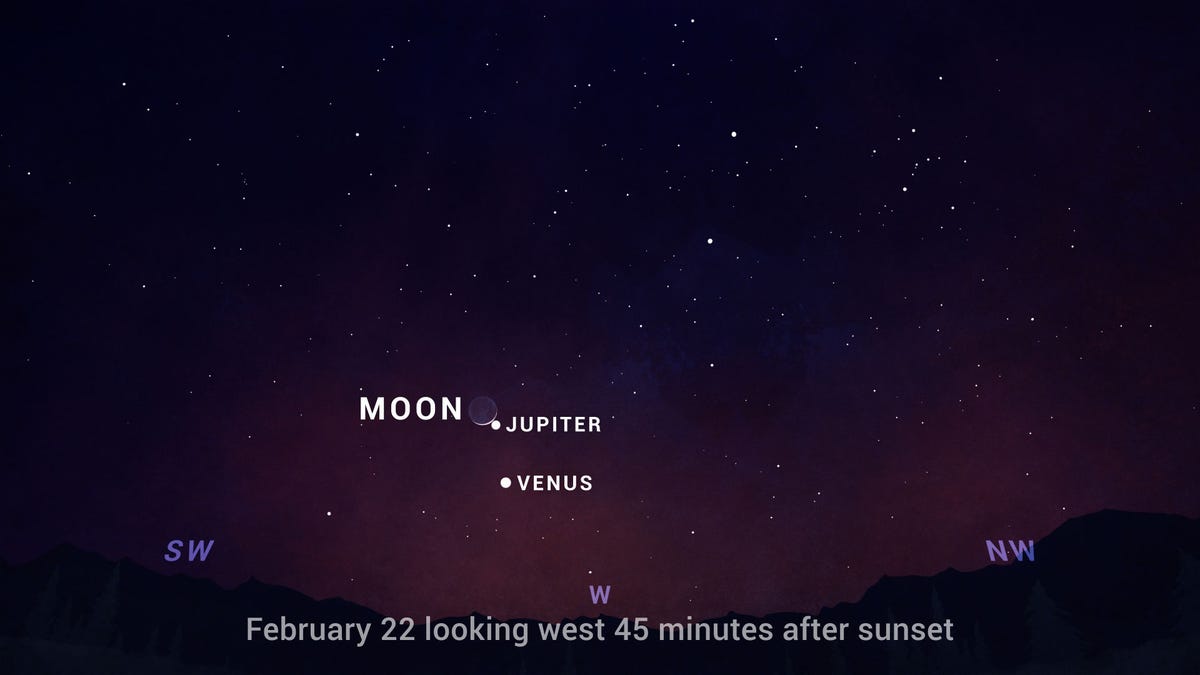
This sky chart will help you identify Jupiter and Venus in the night sky. This image shows the scene for 45 minutes after sunset Feb. 22.
NASA
The planets Venus and Jupiter are making beautiful music together in the night sky this month. The pair are heading for a close conjunction on March 1, but their cosmic tango will make for lovely skywatching through the end of February.
NASA’s February skywatching guide and video offer up tips for enjoying the meeting of the planets. NASA says to look west in the hour or so after sundown. It helps that they’re the brightest planets in the sky, so locating them should be pretty easy. You can always consult a stargazing app for an assist if needed.
If you check in on Venus and Jupiter each night, you’ll see them scooching closer together. They’ll even be posing with the crescent moon on Feb. 22, making for a scenic trio of celestial sights. In case the weather foils your viewing plans, the Virtual Telescope Project in Italy has you covered. VTP will livestream the moon, Venus and Jupiter as seen over the skyline of Rome starting at 11 a.m. PT on Wednesday.
The planets are plenty bright for naked-eye viewing, but pull out binoculars if you have them handy. With the right conditions and steady hands, you may be able to spot some of Jupiter’s largest moons with binoculars.
While Venus and Jupiter will get cozy for their close conjunction on March 1, it’s just a trick of the cosmos. The two planets are in reality extremely far apart and in no danger of booping each other. As a bonus, you won’t have to stay up late to enjoy the show each night.
